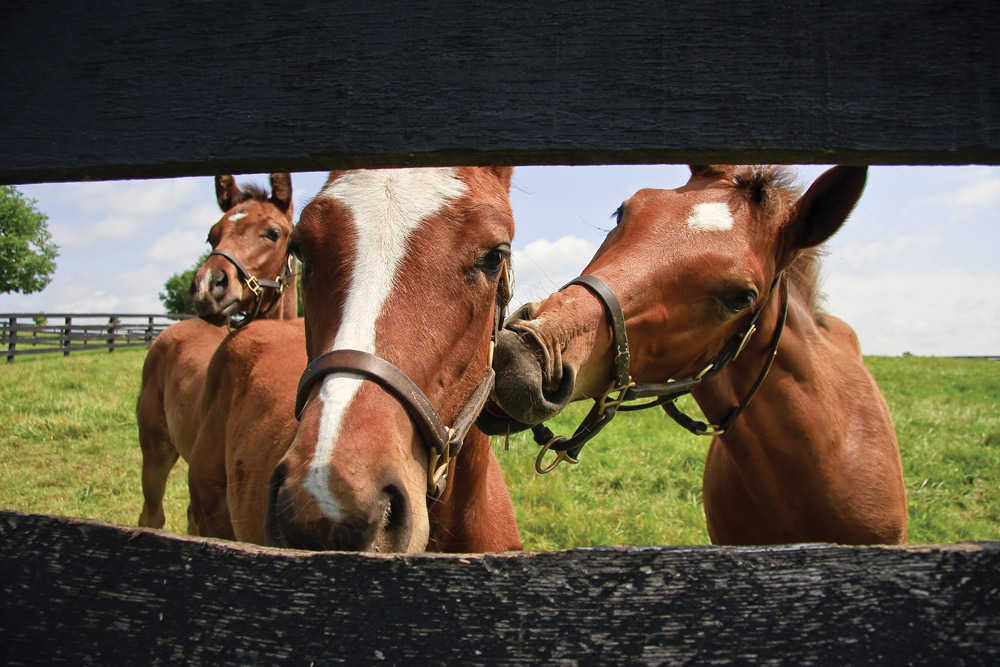The debate over when horses physically mature is a common one, heard from the barn aisle to the backstretch. One rider digs deep to separate fact from fiction.
It can be a fiery dispute. When do you start a horse under saddle, and at what point are horses fully mature? Everyone has their own opinion – just step into a barn at the track or visit the aisle of a breeding facility and you’ll hear several different justifications for the ages horses should be started at. Many young horses are being started under saddle and primed for competition as early as two years of age – even sooner in some cases.
Up for Debate
Several months ago, I began diligently researching equine maturation rates. It started with a simple question that appeared on an online equine forum – a horseperson, on acquiring her first youngster, was gathering opinions on when she should start the horse. They belonged to a barn where all the other horses were being started around the age of two. You can imagine the “conversation” that followed among the forum members.
While many people were tossing out different ages and reasons, it seemed very few could come up with concrete evidence as to what age a horse was mature enough to be started under saddle with the least detrimental effects. The answers given included: “My vet said X age,” with “X” varying by years from person to person. Or: “Have your vet check to see if his knees are closed,” which in the end seemed the most agreed-on method.
I began to do my own research, and have been a bit surprised at the lack of prominent, accessible information and guidelines as to when horses physically mature. In general, asking a general practice large animal veterinarian what age you should start your horse under saddle can yield any number of answers, similar to what I saw in the online forum. It’s understandable to some degree, since horses are individuals, and without extensive x-rays, your veterinarian cannot see at what point your horse has matured. But are there no set guidelines?
A Horse is a Horse is a Horse
I frequently hear that heavier breeds, such as many Warmbloods or Draft crosses, take longer to mature, while lighter breeds such as Thoroughbreds mature at a much quicker rate (that’s why we see them on the track at the age of two). My research, however, revealed that this isn’t the case. Horses are not fully mature until between the ages of five and seven years old. A horse is a horse – and they all mature at approximately the same rate.
The knees have the answer – or do they? So what is “physical maturity”? When people speak of a horse’s knees being closed, what they are technically referring to (whether they know it or not) are the growth plates in this area. Growth plates begin as cartilage and become bone as the horse ages. Obviously, it is easier to do damage to these areas when they are cartilage rather than bone, hence the waiting period. And that brings us to one of my main questions – are the knees the final frontier when it comes to a mature horse?
The answer is no. The knees are not the only growth plates in the horse’s skeletal system – there are many. What most riders do not know is the growth plates generally convert from the hooves up. So just because your horse’s knees are “closed” does not mean the other vital structures are mature yet. The knee end of your horse’s radius is simply the last area of the leg to close – that’s why vets will x-ray that area. But the rest of your horse has not finished growing.
Waiting Game
The last structures to mature are the vertebrae, fairly important given your horse’s back is what you will be asking him to carry you on, and that damage in the back can result in an inability to perform the movements and tasks you’d like him to. “Morphologically, physeal closure in cervical vertebrae is very delayed compared with limb longbones; the cranial physes of C 3 – 7 are closed by three years ….” writes I.G. Joe Mayhew. “Physeal closure in [the] T [thoracic] – L [lumbar] vertebral bodies occurred between five and seven years of age.” Going by this, you should wait until your horse is between the age of four and six before asking him to carry your weight, depending on the horse, circumstances and workload. For example, many people will begin light groundwork when their horses are two or three, back them lightly at four, work on the basics at five, then go off to work around age six.
In order to simplify things, I compiled into a chart the data I found from a few reliable sources and studies, listing some (not all) of the growth plates and the accompanying average rates of maturation. Naturally, people’s opinions are still going to vary, but using the accompanying table makes it much easier to determine where a horse is at than just looking at one area of his body, or by guessing based on how mature you think he looks. These days we are breeding horses to look mature earlier and earlier, and that can mislead riders into starting them sooner because they look and move like physically balanced and mature horses.
Our equines are susceptible enough to accident and injury – why push things by getting overeager? Horses started by patient, attentive riders who have their mount’s wellbeing in mind will be better set up for a successful career and long-term soundness.
Isabella Edwards is an equine enthusiast and avid competitor living in Ontario, Canada. She and her mare compete at the provincial level in both dressage and hunter/jumper.








